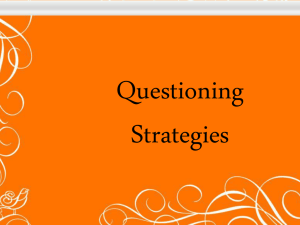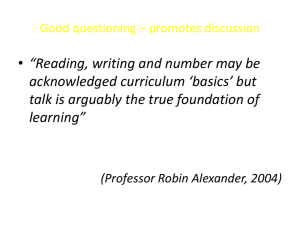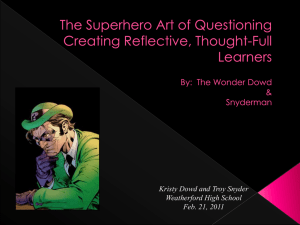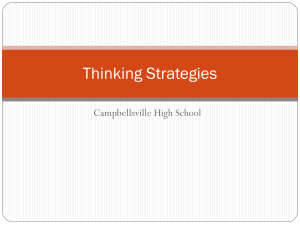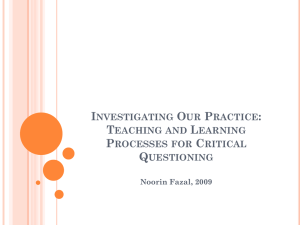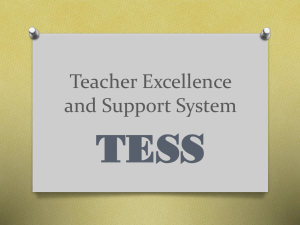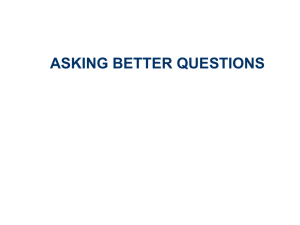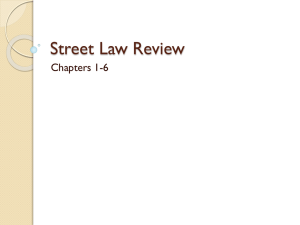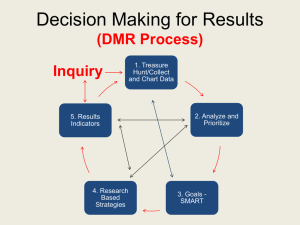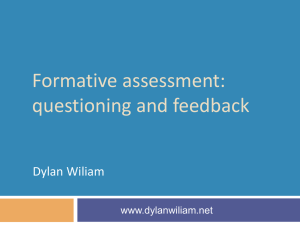File - 21st Century School Teacher
advertisement
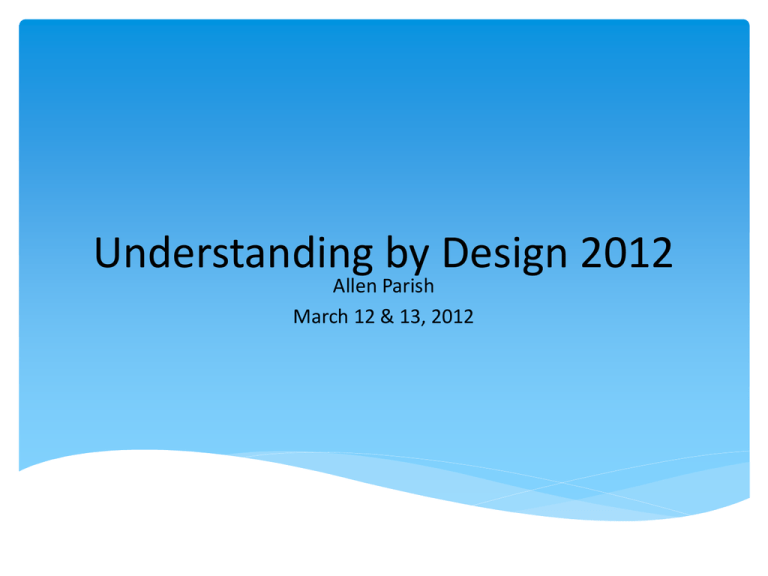
Understanding by Design 2012 Allen Parish March 12 & 13, 2012 Welcome Website for files http://21stcenturyschoolteacher.com Agenda Tuesday Levels of Thinking and Questioning Incorporating Questioning into Lesson Design Writing Units and Lessons Lunch Writing Units and Lessons Peer Review of Lessons Understandings Common core standards are not a curriculum. Common core standards align well with Understanding by Design. The process of unpacking standards is critical to understanding their implications for design, instruction and assessment. Quality questioning leads to understanding and transfer. Questions To what extent are the ideas of acquisition, meaning making and transfer embedded in the Common Core Standards? If the state is going to hand us a curriculum, why unpack standards? What makes a good question? A good teacher question? A good student question? How might our assessments be affected by Common Core Standards? Model Lesson Pilot Suggested Steps Before the lesson Study lesson to identify CCSS-aligned content and instruction. Read and analyze identified text; identify standards, questions to ask, potential areas of difficulty for students, possible scaffolds During the lesson Observe/monitor and provide written or oral feedback After the lesson Engage teachers individually in formal reflection on the lesson (i.e., Examine the CCSS-aligned practices (What did the lesson do? What did the lesson not do?) What went well? What could be improved?) Engage entire faculty in reflection/discussion; ask individual teachers to demonstrate understandings for colleagues Gather examples of CCSS-aligned student assignments and student work Questioning in the Classroom Three-Minute Pause What role does questioning play in your classroom? Steps to the Inquiry Process Higher-level questions are essential to facilitating conceptual understanding. The inquiry process is facilitated by skillful questioning and provides students with the opportunity to become independent thinkers who master their own learning. COSTA’S LEVELS OF QUESTIONING Level One: The answer can be found in the text (either directly or indirectly) Very concrete and pertains only to the text. Asks for facts about what has been heard or read Information is recalled in the exact manner/form it was heard COSTA’S LEVELS OF QUESTIONING Level Two: The answer can be inferred from the text. Although more abstract than a Level One question, deals only with the text Information can be broken down into parts Involves examining in detail, analyzing motives or causes, making inferences, finding information to support generalizations or decision making Questions combine information in a new way COSTA’S LEVELS OF QUESTIONING Level Three: The answer goes beyond the text. Is abstract and does not pertain to the text Ask that judgments be made from information Gives opinions about issues, judges the validity of ideas or other products, justifies opinions and ideas COSTA’S LEVELS OF QUESTIONING LEVEL ONE: Define Describe Identify List Name Observe Recite Scan LEVEL TWO: Analyze Compare Contrast Group Infer Sequence Synthesize LEVEL THREE: Apply Evaluate Hypothesize Imagine Judge Predict Speculate Level Three questions require students to go beyond the concepts or principles they have learned and to use these in novel or hypothetical situations. TOPIC Level One (complete, count, match, name, define, observe, recite, describe, list, identify, recall) Level Two (analyze, categorize, explain, classify, compare, contrast, infer, organize, sequence) Level Three (imagine, plan, evaluate, judge, predict, extrapolate, invent, speculate, generalize) Science What is a gene? What is a chromosome? Compare and contrast genes and chromosomes. Spanish Conjugate the Spanish verb “ser” in the present tense. Elaborate on the similarities and differences of the preterite and past tenses in the Spanish language. When, if ever, can x^2=2x. Use what you know about genes and chromosomes to predict a trait in a child. “Invent” a new Spanish regular “ar” ending verb. Use it in 6 sentences, using different tenses and persons. Mathematics Evaluate this expression: 3x^2 if x=4. History Which amendment in the Constitution gives citizens the right to bear arms? English In the book The Giver, what did Jonas’ mom do for a living? Compare and contrast societal conditions in the US that impacted the inclusion of the second amendment in the US Constitution with conditions today. Use examples from the book to elaborate on the theme of balancing freedom and security. Prove whether or not the operation y, is commutative, given that ayb=a^2-b If there were a constitutional amendment that prohibited ownership of weapons by citizens, how might American society be affected? Speculate as to how your community would change if some of the societal controls embraced by the members of Jonas’ community in the book The Giver, were embraced within your community. Sample Questions Level 1: Gather and Recall Information (Gathering/Input) Ask Level 1 questions to identify what students know about the problem or question and connect to prior knowledge. •What do you know about your problem? •What does __________mean? •What did you record from your class notes about ____? •What does it say in the text about this topic? •What is the formula or mnemonic device (ex. P-E-M-D-A-S) that will help you identify the steps necessary to solve the problem? Sample Questions Level 2: Make Sense Out of Information Gathered (Processing) Ask Level 2 questions to begin processing the information gathered, make connections and create relationships. •Can you break down the problem into smaller parts? What would the parts be? •How can you organize the information? •What can you infer from what you read? •Can you find a problem/question similar to this in the textbook to use as an example? •What is the relationship between ______ and ______? Sample Questions Level 3: Apply and Evaluate Actions/ Solutions (Applying/Output) Ask Level 3 questions to apply knowledge acquired and connections made to predict, judge, hypothesize or evaluate. •How do you know the solution is correct? How could you check your answer? •Is there more than one way to solve the problem? Could there be other correct answers? •Can you make a model of a new or different way to share the information? •How do you interpret the message of the text? •Is there a real life situation where this can be applied or used? •Can you explain it in a new and different way? •Could the method of solving this problem work for other problems? •How would you teach this to a friend? TOPIC Level One (complete, count, match, name, define, observe, recite, describe, list, identify, recall) Name the elements that make up water. Level Two (analyze, categorize, explain, classify, compare, contrast, infer, organize, sequence) Level Three (imagine, plan, evaluate, judge, predict, extrapolate, invent, speculate, generalize) What is the definition of a trapezoid? What happened to the litmus paper when inserted in the liquid? Recite the Preamble to the Constitution. Evaluate the expression (3x+5)^2 if x = -2. Analyze the character’s intentions in the scene. Distinguish one candidate’s platform from that of the other candidate. Explain how involvement in war impacts the economy. Arrange the following numbers in order from smallest to largest: Use four 4s and math operational symbols to create expressions that equal the numbers 1-10. What will California’s population be like in 2050 if we continue to grow as we have for the past 10 years? Make a plan to complete your science fair project. Imagine that you were in the character’s position, how would you react? Create an invention that uses at least three types of simple machines. Applying the principles espoused in the Fifth Amendment, how would you decide the case of: Three-Minute Pause How can Costa’s levels of questions be used in conjunction with A, M, T goals and the Common Core Standards? Writing Questions Create level one, two, and three questions for your lesson Share—Triple Whip! Work Time—Model Lesson Design Math Resources Math Design Collaborative http://www.mygroupgenius.org/mathematics Formative Lessons http://map.mathshell.org/materials/lessons.php Sample Questions http://www.gips.org/learning/CurricularAreas/mathematics/K-12-Curriculum-Framework English Resources Socratic Seminars http://www.nwabr.org/education/pdfs/PRIMER/PrimerPieces/SocSem.pdf http://www.greece.k12.ny.us/academics.cfm?subpage=1260 Unpacking Examples http://www.ncpublicschools.org/acre/standards/common-coretools/ Writing Continuum http://www.epsilen.com/CCSSO/continuum/?system_name=ejoCFRujtMA=&selecte d_system_name=ejoCFRujtMA= Questioning and close reading model (Hunt Institute) http://www.youtube.com/watchv=Ho_ntaYbL7o&feature=related Lunch Work Time—Model Lesson Design Continued . . . Peer Review Protocol Groups of three Two talk—author listens Peer Review What evidence is there of student acquisition, meaning making, and transfer To what extent is there alignment with the unpacked standard(s) and AMT? Is there an appropriate balance of level one, two, and three questions?
